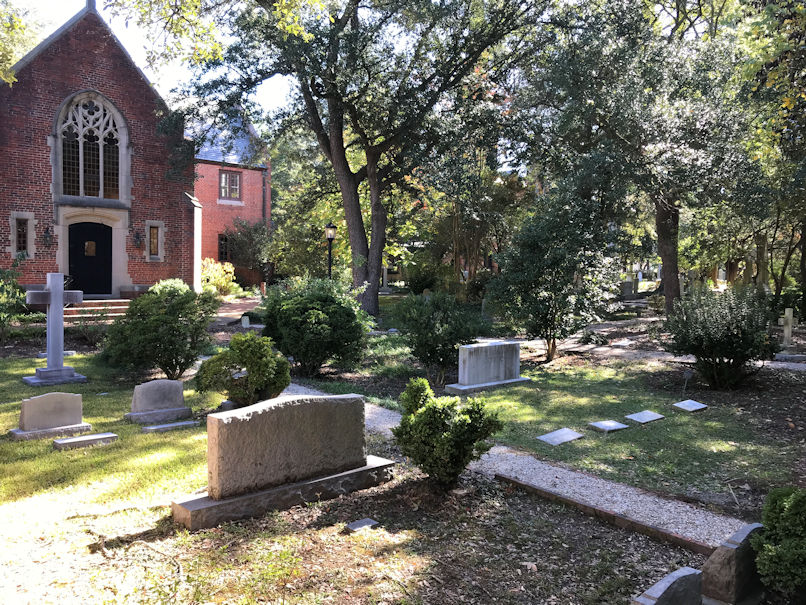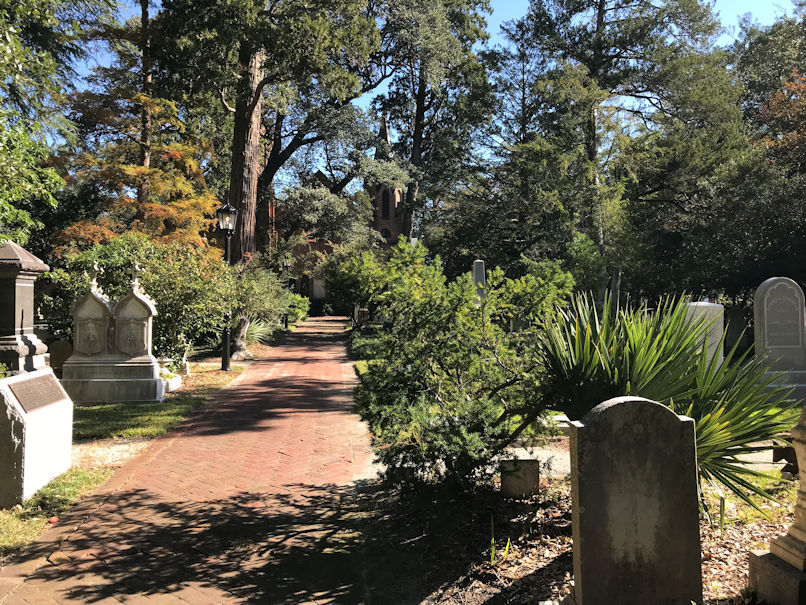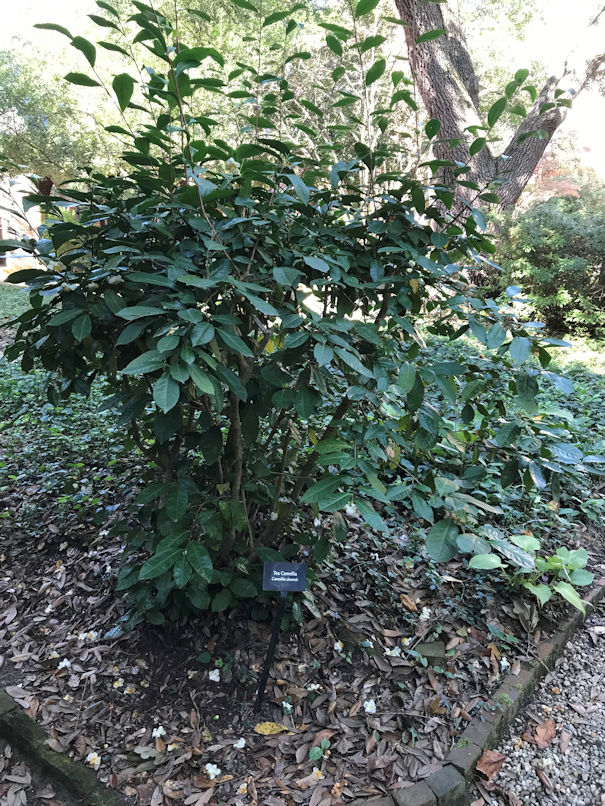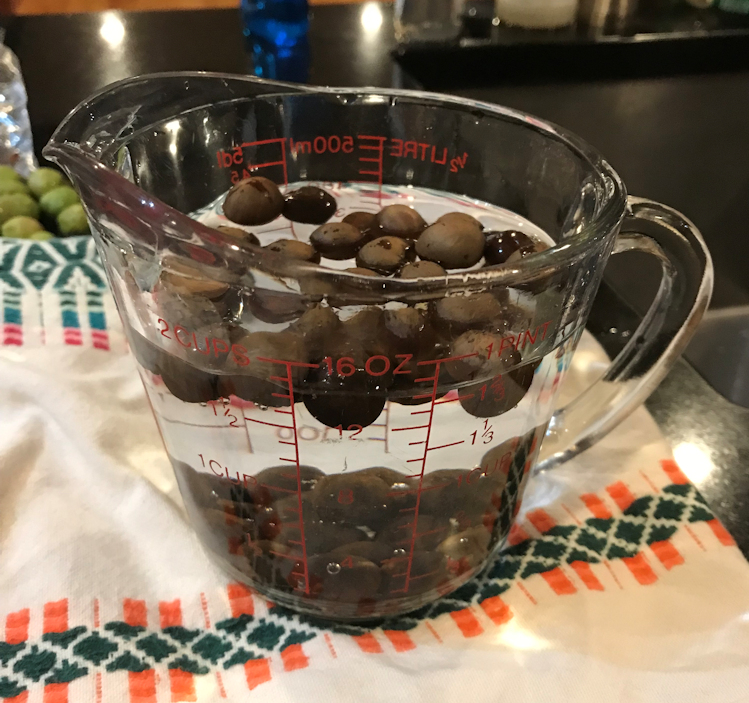Tea (plant) Hunters S1 E1
 Earlier this year we went to a workshop on planting camellias offered by Camellia Forest Nursery. A couple from Tarboro NC who were also there mentioned that they had seen tea plants growing in an old cemetery in their town. Tarboro is one of the oldest towns in North Carolina. The cemetery is part of the Calvary Episcopal Church. A little internet searching turned up more information. The church and cemetery were constructed in 1868. The grounds of the cemetery were designed and planted by the Reverend Joseph Blount Cheshire who was also a professional arborist. He planted native and exotic plants, including camellias. Both the church and the cemetery are listed on the National Register of Historic Places. It was an interesting lead that we tucked away to check out later.
Earlier this year we went to a workshop on planting camellias offered by Camellia Forest Nursery. A couple from Tarboro NC who were also there mentioned that they had seen tea plants growing in an old cemetery in their town. Tarboro is one of the oldest towns in North Carolina. The cemetery is part of the Calvary Episcopal Church. A little internet searching turned up more information. The church and cemetery were constructed in 1868. The grounds of the cemetery were designed and planted by the Reverend Joseph Blount Cheshire who was also a professional arborist. He planted native and exotic plants, including camellias. Both the church and the cemetery are listed on the National Register of Historic Places. It was an interesting lead that we tucked away to check out later.

October is a good time to look for tea plants. The plants bloom with distinctive white flowers that make it easier to tell them apart from other Camellias. Also, seeds that started the year before are mature. We called before our visit and spoke with the church secretary. She was unaware of any tea plants in the cemetery but did encourage us to come and visit. It is a five hour drive from our headquarters/tea garden/creative space in Asheville to Edgecomb County. The call made our lead seem slim, but we decided to trust the people who gave us the initial information. With beautiful weather and a few stops along the way, the drive was not bad.

Main Street, Tarboro NC
We reached Tarboro before noon. It is not a big town and the church was easy to find. The cemetery is beautiful. We were the only visitors. We were able to slowly wander the grounds in no particular hurry. The trees and shrubs are old growth and shade most of the space. The worn nineteenth century headstones contrast with the brown earth and green plants. As we moved through the space we counted ten tea plants including one quite large plant near the Pippen family graves. Most of the plants were 3 to 4 feet tall. Only two or three had identifying markers. Several small seedlings were coming up under the larger plants which seems to be typical for Camellia sinensis plantings. Another one, that was probably 2 to 3 years old and flowering, had jumped a side walk to find an unoccupied space to call its own. We were mindful of the Cemetery’s historic designation and were careful not to disturb the plants. We did find several seeds on the ground and sidewalks that seemed to need a home. We gathered up the orphan seeds and brought them back with us to the mountains. It is not clear to us at this time if the cemetery tea plants are part of the original plantings or if they were added later. There was a USDA program to distribute tea plant seeds to private individuals at the time the cemetery was developed. It is possible the current plants were grown from USDA seeds or possibly are seedlings of plants grown from USDA seeds.

View from the West Gate

The North wall

The largest plant near the Pippen family graves
We did have one other reason for our trip east. October 16 was the date for the first post-pandemic Durham Zine Machine printed matter festival. The last Zine Machine was in 2019. It was a great collection of zinesters and adjacent producers. We’ve been looking forward to a follow up event since that last one. A trip to Chapel Hill also lets us visit Camellia Forest. They are adding a new building that will serve as a classroom and tea processing facility. It will be a great asset for local and regional growers and tea lovers. Check out this video for views of the nursery.

A smaller plant that is more typical of the ones we saw.

Seeds from the Cemetery – Sinkers and Floaters
